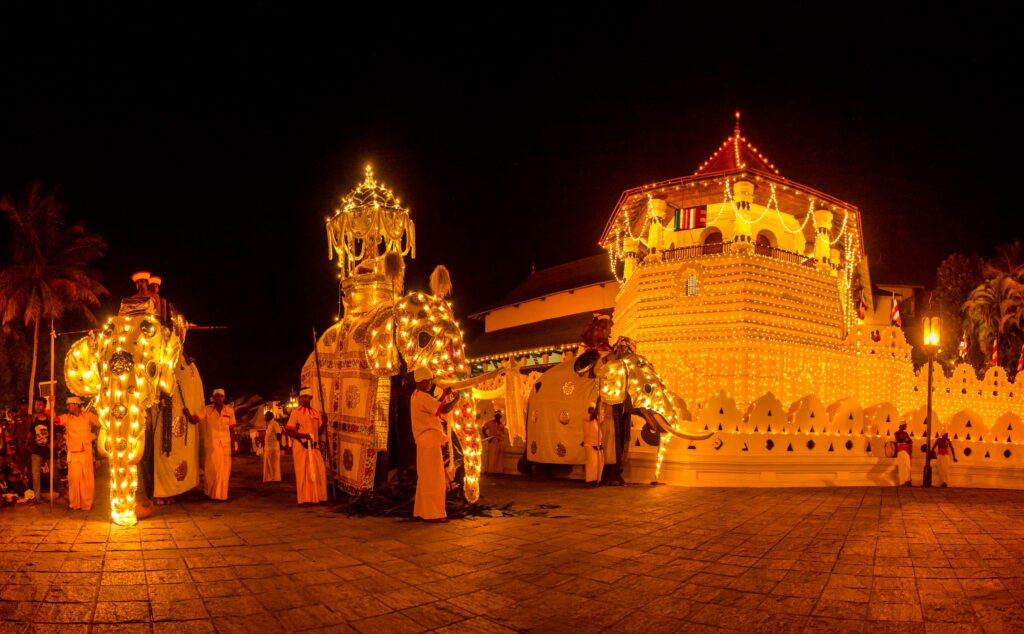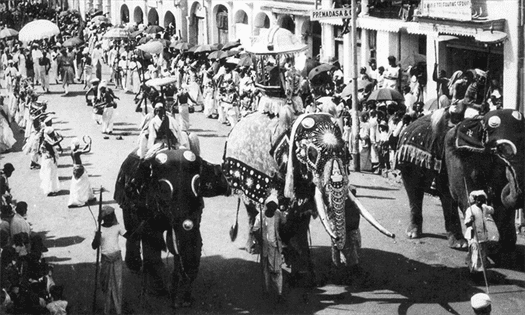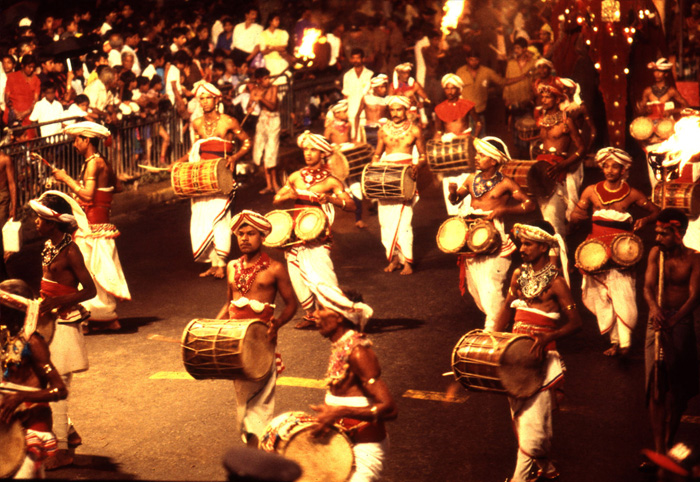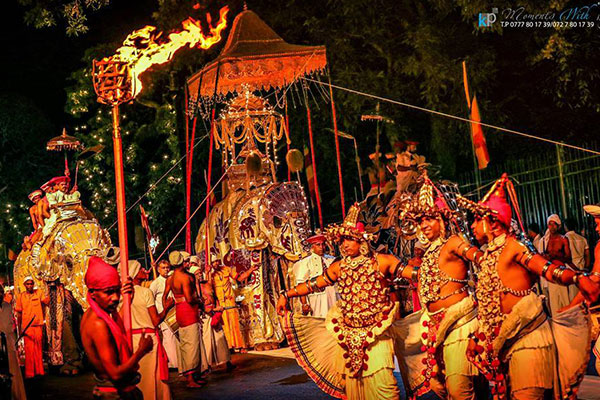The Esela Perahara is one of the most anticipated and significant cultural events in Sri Lanka. Spanning over 10 days, this religious festival is celebrated annually in the city of Kandy, and is known for its vibrant colors, elaborate costumes, and rich history.

The festival has been celebrated for over two centuries and is deeply rooted in Sri Lankan Buddhism. It takes place during the month of Esala, which corresponds to July or August in the Gregorian calendar, and it commemorates the arrival of the sacred tooth relic of the Buddha to Sri Lanka.
To truly appreciate the significance of the Esela Perahara: Sri Lanka, it is important to understand the history and cultural context surrounding this annual festival. In this article, we will take a closer look at the history, traditions, and significance of the Esala Perahera.
History of the Esala Perahera
The Esela Perahara: Sri Lanka has a long and storied history that dates back over two centuries. According to legend, the festival originated during the reign of King Kirthi Sri Rajasinghe, who ruled the Kandyan Kingdom from 1747 to 1781.

The king was said to have been suffering from an illness that could not be cured by traditional medicine. In a dream, he was visited by the four gods Natha, Vishnu, Kataragama, and Saman, who instructed him to make a sacred procession to the Temple of the Tooth in Kandy, where the sacred tooth relic of the Buddha was enshrined.
Following the gods’ instructions, King Rajasinghe organized the first Esala Perahera in 1755, and since then, the festival has been celebrated annually in Kandy, becoming one of the most significant cultural events in the country.
Traditions and Activities
The Esala Perahera is celebrated over a period of ten days, and each day has its own unique traditions and activities. The festival begins with the planting of a sanctified jackfruit tree at the four Devales, or temples, dedicated to the four guardian gods of Sri Lanka.

On the fifth day of the festival, the Kumbal Perahera takes place, which is a smaller procession that signals the start of the main event. The Kumbal Perahera features colorful elephants, drummers, dancers, and other performers who march through the streets of Kandy.
The following day, the Randoli Perahera begins, which is the main procession and the most elaborate and spectacular event of the festival. The Randoli Perahera features hundreds of performers, including drummers, dancers, firebreathers, stilt walkers, and acrobats, as well as dozens of ornately decorated elephants.
The highlight of the procession is the beautifully decorated Maligawa Tusker, or the Temple Elephant, which carries the sacred tooth relic of the Buddha in a golden casket on its back.
The procession starts in the evening and lasts well into the night, with crowds of spectators lining the streets to catch a glimpse of the colorful pageantry. The final day of the festival features a water-cutting ceremony, which is said to symbolize the end of the festival and the washing away of sins.
Significance of the Esala Perahera

The Esala Perahera is a deeply significant event in Sri Lankan Buddhism, as it commemorates the arrival of the sacred tooth relic of the Buddha to Sri Lanka, which is believed to have been enshrined in the Temple of the Tooth in Kandy since the 4th century AD.
The festival also has cultural and historical significance, as it is a celebration of Sri Lankan heritage and tradition, and serves as a way to preserve and showcase the country’s rich cultural history to future generations. The Esala Perahera is believed to have originated during the reign of King Devanampiya Tissa in the 3rd century BCE, and over the years, it has evolved and become an integral part of Sri Lankan culture.
One of the most important aspects of the Esala Perahera is the participation of the Diyawadana Nilame, who is the custodian of the Temple of the Tooth Relic in Kandy. He plays a key role in the festival, overseeing the preparations and ensuring that all the rituals and traditions are followed correctly. The Diyawadana Nilame is responsible for the casket that contains the sacred tooth relic of the Buddha, which is taken out in a procession during the festival.
The Esala Perahera is also an opportunity for local artisans and craftsmen to showcase their skills and crafts. Many traditional crafts, such as woodcarving, metalworking, and weaving, are on display during the festival, allowing visitors to appreciate the country’s rich artistic heritage.
Aside from its cultural and historical significance, the Esala Perahera is also a major tourist attraction, drawing visitors from all over the world to witness the grand spectacle. The festival is a unique opportunity for travelers to immerse themselves in Sri Lankan culture and experience firsthand the vibrant and colorful traditions of the country.
In recent years, there has been a growing concern over the impact of tourism on the festival and the city of Kandy. With the increase in visitors, there has been a corresponding increase in commercialization and exploitation of the festival for commercial gain. As a result, there have been efforts to regulate the festival and ensure that it is carried out in a responsible and sustainable manner.
Overall, the Esela Perahara is an important cultural event in Sri Lanka that is steeped in tradition and history. It is a celebration of the country’s rich cultural heritage and an opportunity for visitors to experience the vibrant traditions and customs of the country firsthand. With proper regulation and management, the festival can continue to thrive and serve as a testament to the enduring legacy of Sri Lankan culture.
https://en.wikipedia.org/wiki/Kandy_Esala_Perahera
Read More Articles: Yang Adventure
1 Comment
Pingback: Katusu Konda - Yang Adventure